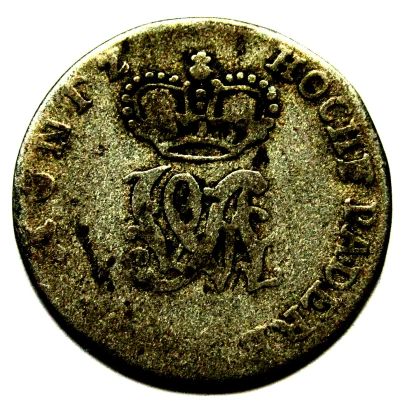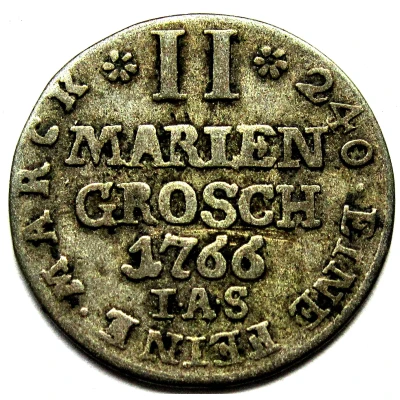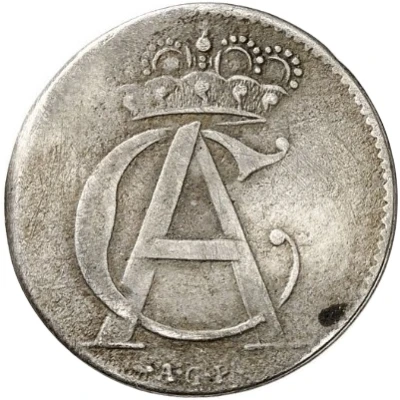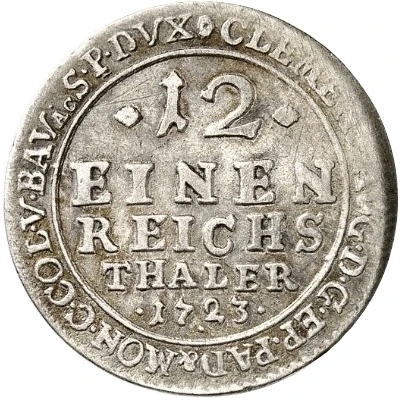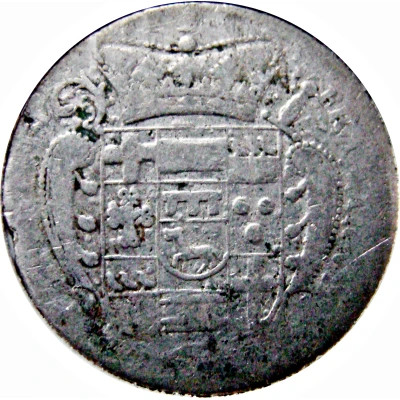
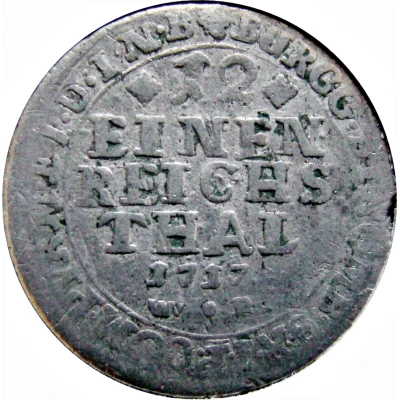

1⁄12 Reichsthaler - Francis Arnold of Metternich
| Billon (.438 silver) | 3.5169 g | 24 mm |
| Issuer | Bishopric of Paderborn (German States) |
|---|---|
| Prince-bishop | Francis Arnold of Metternich (Franz Arnold von Metternich) (1704-1718) |
| Type | Standard circulation coin |
| Years | 1709-1718 |
| Value | 1⁄12 Thaler |
| Currency | Thaler |
| Composition | Billon (.438 silver) |
| Weight | 3.5169 g |
| Diameter | 24 mm |
| Shape | Round |
| Demonetized | Yes |
| Updated | 2024-10-05 |
| Numista | N#44504 |
|---|---|
| Rarity index | 83% |
Reverse
6-line inscription with date and mintmaster's initials
Script: Latin
Lettering:
BURGG.STROMB.S.R.I.P.COM.PYRM.D.IN.B
12 EINEN REICHS THAL(ER)
1717
Translation:
BURGGRAVIO STROMBERGIAE SACRI ROMANI IMPERII PRINCEPS COMES PYRMONTES DUX IN BERKELO AND WERTH
Shield of Paderbron and Pyrmont, center shield of Wolff-Metternich
Comment
Ruler: Franz Arnold:https://de.wikipedia.org/wiki/Franz_Arnold_von_Wolff-Metternich_zur_Gracht
Mintmaster AGP: Anton Gottfried Pott (1714-23)
KM# 176.2
© Image courtesy of Stephen Album Rare Coins
KM# 176.4
© Image courtesy of ǝRBe
KM# 176.5
© Image courtesy of Leipziger Münzhandlung und Auktion Heidrun Höhn
KM# 176.6
© Image courtesy of Emporium Hamburg
Interesting fact
One interesting fact about this coin is that it was minted during a time of great economic and political change in Europe, particularly in the German States. The Reichsthaler was a standardized currency that was introduced in the late 16th century to simplify trade and commerce across the region, and it remained in use until the early 19th century. The fact that this coin was made of Billon, a silver-copper alloy, suggests that it was intended for everyday use and circulation, rather than being a high-value collector's item. Additionally, the fact that it was minted in the Bishopric of Paderborn, a region in modern-day Germany, speaks to the complex political and religious landscape of Europe during this time period.
